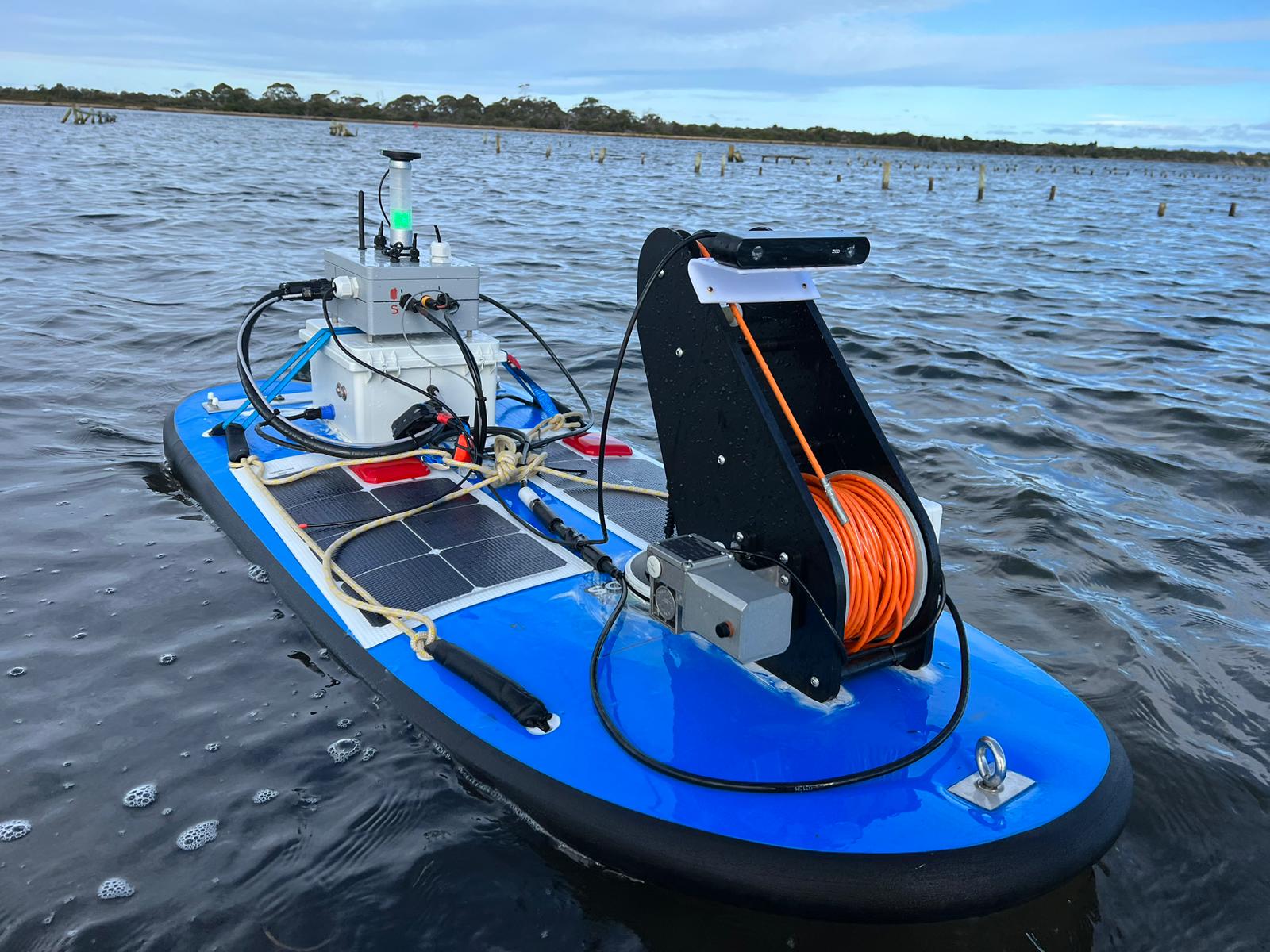
Image credit: Aquatic Systems Research Group, UQ School of Civil Engineering.
University of Queensland researchers are developing autonomous marine robots that could help with aquaculture, pollution control, ecosystem preservation, flood monitoring and more.
UQ’s Brendon Duncan and his colleagues at UQ’s School of Civil Engineering’s Aquatic Systems Research Group (ASRG) said the robots have a bright future, helping with all sorts of waterway monitoring.
“Our robotic friends can get better, more up-to-date data readings of reservoirs and rivers, perform water sampling in hazardous tailings dams, facilitate the collection of crucial data during unsafe weather conditions and much more,” Mr Duncan said.
“They’ll be able to conduct routine high-resolution monitoring tasks, which may be dirty, dull or dangerous for humans.
“The management of water resources is a challenging, but necessary, undertaking, often relying on insufficient spatial and temporal data resolution and quality.
“But, with this technology, we’ll have the information needed for management actions, be able to make real-time waterway models, and we’ll supercharge marine scientific research.
“Humans will always play a primary and critical role in science, but these robots are a vital tool to help gather data we wouldn’t be able to collect otherwise.”
The team has been busy developing two autonomous vessels – Prawnie and Rogue.
“Prawnie is a 6-metre catamaran that uses LiDAR, or light detection and ranging technology, and computer vision systems to identify and avoid obstacles while autonomously performing its mission,” Mr Duncan said.
“It’s the result of a student-led development project designed to operate in both close quarters and offshore conditions.
“And our second boat, Rogue, builds on this technology, and has been developed from a 1.8 metre stand-up paddle board, making it better suited for lakes, rivers, and sheltered coastal systems.”
Prawnie competed in the prestigious RobotX Challenge, with Rogue being used to provide much-needed water quality data to oyster farmers in Tasmania.

Image credit: Aquatic Systems Research Group, UQ School of Civil Engineering.
“Currently our oyster farmers rely on a system which provides the salinity of the water at fixed-point locations 30 centimetres deep ,” Mr Duncan said.
“But these farms are quite large structures, which can’t realistically be characterised by just a few fixed, single-measurement locations.
“And the salinity at 30 centimetres may not actually represent what the oysters themselves are experiencing, as they’re situated between one and five metres beneath the surface.
“So instead, our vessels will slowly motor up and down the farms all day, capturing water column profiles from all locations, using an AI model to avoid obstacles and detecting points of interest.
“We hope that oyster farmers across the world will one day be able to deploy a cost-effective and reliable autonomous vessel, or a fleet of vessels, to perform routine water quality measurements.
“This would allow them to have a vastly more detailed overview of where to place their oysters to promote better growth, and give them more express warning when possible issues arise.
“It’s just one example of how autonomous robots could lead to a better future.”
The research has been conducted with a wide range of industry partners, including Oysters Tasmania, the Blue Economy CRC and Xylem.
Media: Brendon Duncan, brendon.duncan@uq.edu.au, +61 468 812 522; Faculty of Science Media, science.media@uq.edu.au,+61 438 162 687.



